COLLIGNONS in the CIVIL WAR
There were two Collignon brothers who fought in the Civil War. They were 2nd Lt. Nicholas Collignon and Pvt. Augustus M. Collignon. Both fought with the 22nd Regiment Infantry organized in Trenton, New Jersey. They were mustered in on September 22, 1862. Both fought in the battle of Chancellorsville, both survived the "MUD MARCH".CHANCELLORSVILLE
*** The three day battle for Chancellorsville (May 2-5 1863) was bravely fought by the federals. Yet all in vain. Hooker was caught like a bull in a net; and the more he struggled the worse it became. Stonewall Jackson is wounded in this battle and dies. He is shot by mistake by his own soldiers mistaking him and his staff for federal cavalry while emerging from some thickets. The battle of Chancellorsville would come to be known as Lee's masterpiece, an almost perfect example of the military arts.***
THE "MUD MARCH" JAN 20th TO JAN 24th 1863
*** The weather had been very good so far. January was more than half gone and the ground was dry and firm and the air was balmy. On the 20th of January, the Army of the Potomac moved out of its unhappy camps near Falmouth under the thin January sunlight. By evening it was raining, a slow drizzle at first, and then a steady downpour, with a howling wind whipping the rain down country roads. This rain continued for four days. The army was accustomed to mud in its varied forms, knee-deep, hub-deep, but to have it so despairingly deep was demoralizing. A cannon might be inched along for a few yards with triple teams or three hundred men on draglines, but only to watch it sink out of sight if they stopped for a breather or failed to thrust a log under it. Some guns sank so deeply that only their muzzles were visible. The men slipped, floundered and fell sprawling, their shoes sucked off by the mud. When a horse or mule collapsed in the mud, the soldier would simply cut the animal out of its harness and trodden under foot and out of sight in this bottomless mud. The Virginia mud was a mixture of clay, and sand, which when wet, becomes very soft, practically bottomless, and exceedingly sticky and gooey.
The "MUD MARCH" was an attempt by General Burnside to move his army to Banks' Ford on the Rappahannock in an attempt to envelop Lee's position before Fredericksburg. The rain forced abandonment of the project which demoralized the Army of the Potomac.
The army at this time was very demoralized under the leadership of General Burnside who was discharged from the Army shortly after the Mud March of 1863 and replaced by General "Fighting Joe Hooker." ]n fact it was General Hooker who made sure Burnside was discharged from the Army. It was very easy for the men to desert under these demoralizing conditions and return home. After all they walked there, so all they had to do was find some civilian clothes, and take off for home. It is recorded that before General Hooker took command, the desertion was averaging two hundred soldiers a day. By the end of January, and remember the Mud March took place from January 20th to the 24th , desertions from the Army of the Potomac totaled 85,123. Major General “Fighting Joe Hooker” would turn this morale problem around. As soon as he took command, 2,922 returned. Faced with and estimated 125,00 deserters, Lincoln issued a proclamation of general amnesty on March 10, 1863 for all who would report back to duty. Because of this Presidential Proclamation, thousands of deserters returned to the Army of the Potomac and were eligible for an honorable discharge after serving their nine months of service.
________________________________________________________________________________________________________________
This was researched because I found "deserted" on my uncle's record after I applied for and received photo copies from the government archives department in Washington D.C. They supplied copies of their pay and enlistment records. Here is what I found, copied just as it was written in 1863.
---------------Augustus M. Collignon Pvt., Co D, 22 Reg't New Jersey Inf. Company Muster Roll for Jan Feb, 1863. Remarks: Deserted from Camp near Belle Plaines on Jan 20 1863. "Returned under Presidents Proclamation on April 1, 1863."-----------------------------
This started my research, and led to this report on the "MUD MARCH" of 1863. It also explained what I found on his record!
They both completed their 9 month tour of duty and were honorable discharged from the United States Army, June 25, 1863.
History of Co D 22nd Infantry Volunteers
Organized at Trenton, New Jersey, and mustered in September 22, 1862. The Regiment left New Jersey for Washington, D. C., September 29, 1862. They were attached to Abercrombie's Provisional Brigade, Casey's Division, Defenses of Washington, to December, 1862. Patrick's Command, Provost Guard, Army of the Potomac, to January, 1863. 3rd Brigade, 1st Division, 1st Army Corps, Army of the Potomac, to June, 1863.SERVICE
Their duty included the Defenses of Washington until November, 1862. They moved to Aquia Creek, VA., and had duty there guarding the railroad until January, 1863. They moved to Belle Plains and joined the Army of the Potomac January 10, 1863. "Mud March" January 20-24. Duty at Belle Plains until April 27. Chancellorsville Campaign April 27 to May 6. Operations at Pollock's Mill Creek April 29 to May 2. Battle of Chancellorville May 2 to 5. Ordered home for muster out June, reaching Trenton June 22. Mustered out June 22, 1863. The Regiment lost during service, 1 Officer and 40 Enlisted Men by disease. Total 41.The Collignon Brothers Chronological Series of Events
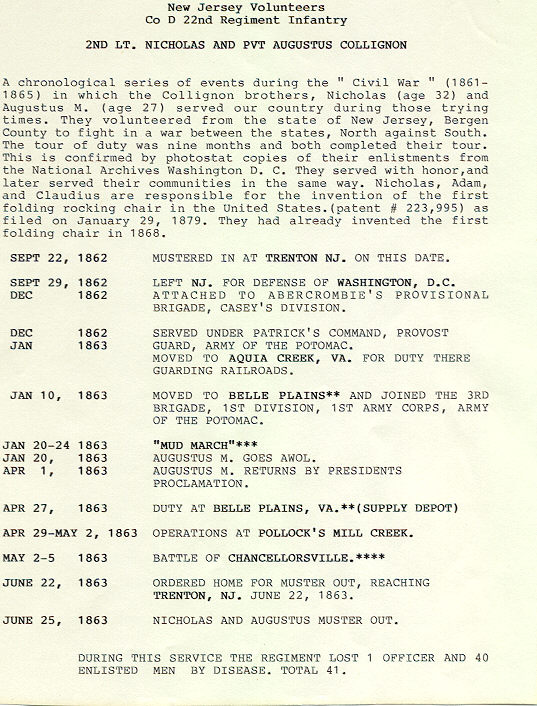
THE MAP OF THEIR MARCH FROM TRENTON NEW JERSEY
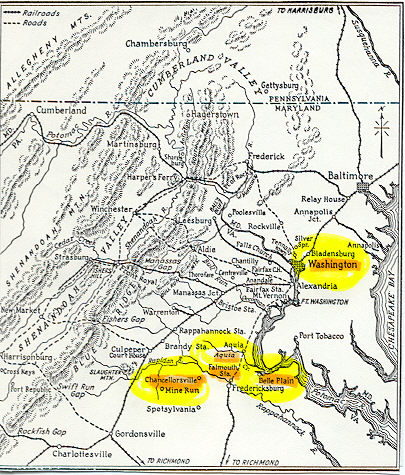
COPIES OF NICHOLAS AND AUGUSTUS CIVIL WAR RECORDS


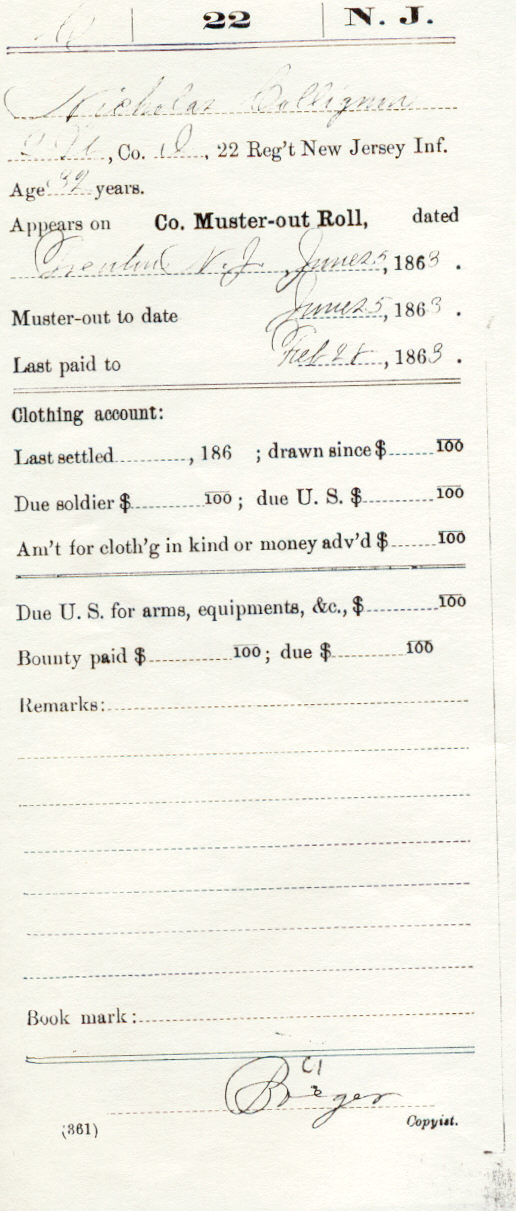
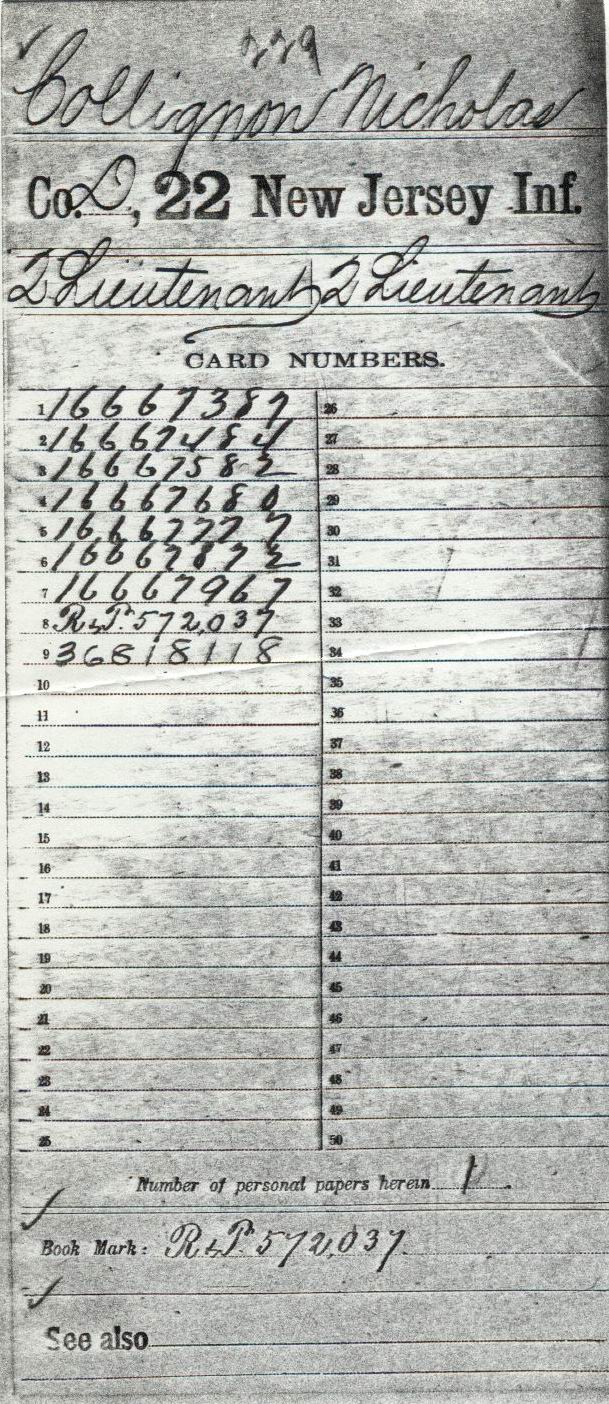
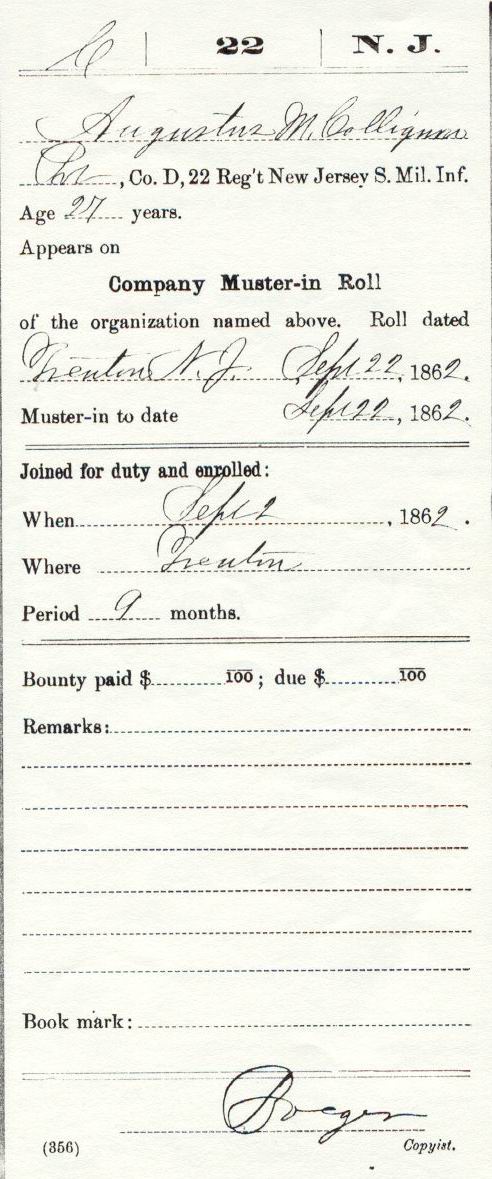
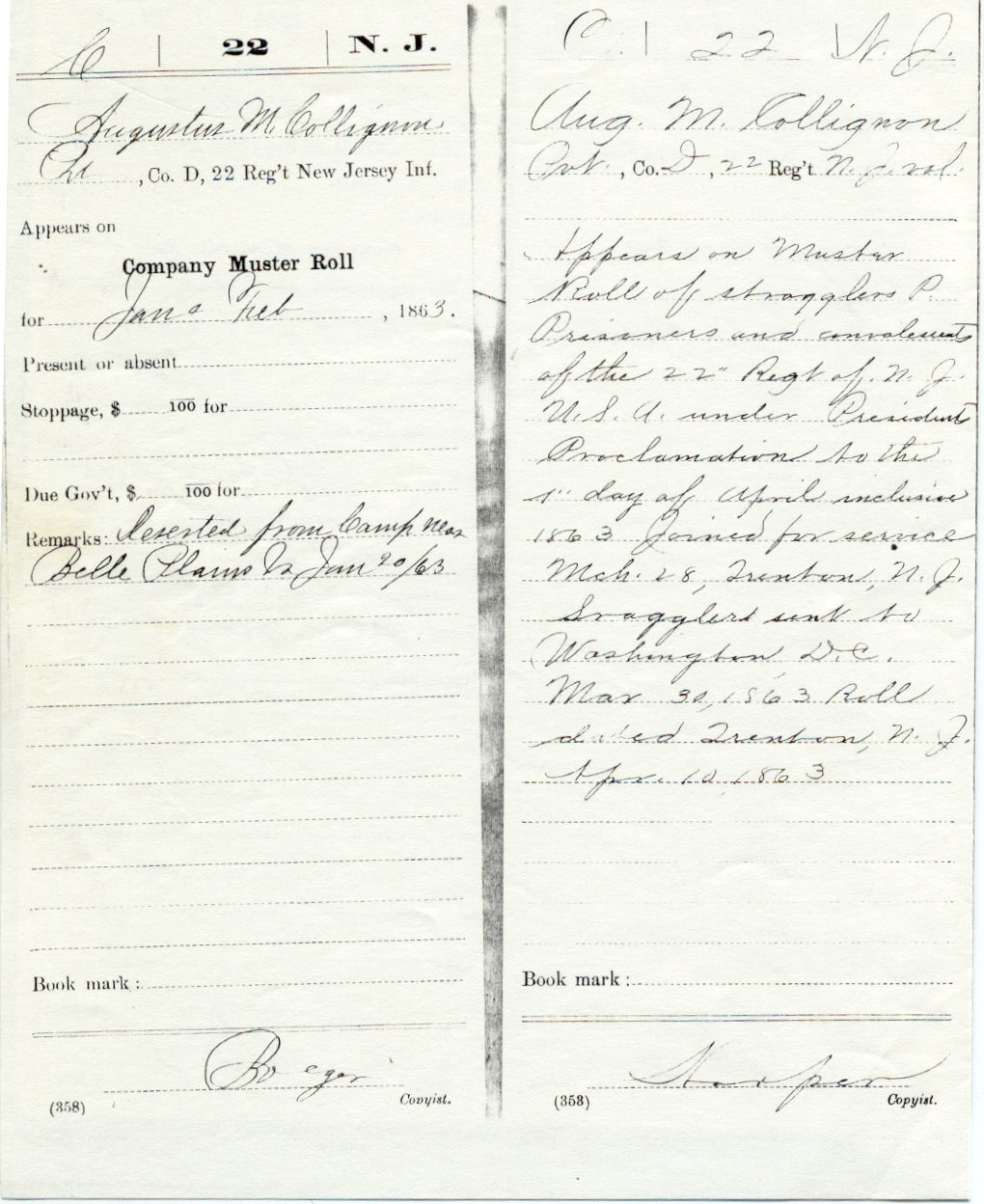



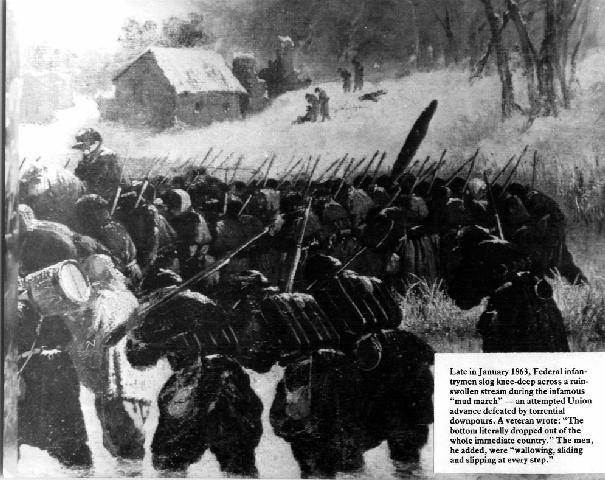
The "Mud March of 1863"
More links and Information on the New Jersey 22nd and the "Mud March"
The Civil War Archive (The 22nd)
Mud March - "Burnside's Quagmire"
This Week in the Civil War (Click on the Calendar and see any date in the Civil War)
THE AMERICAN REVOLUTION
The three Collignons recorded fighting in the American Revolution were: Claude, Jacques, and Francois Collignon.
